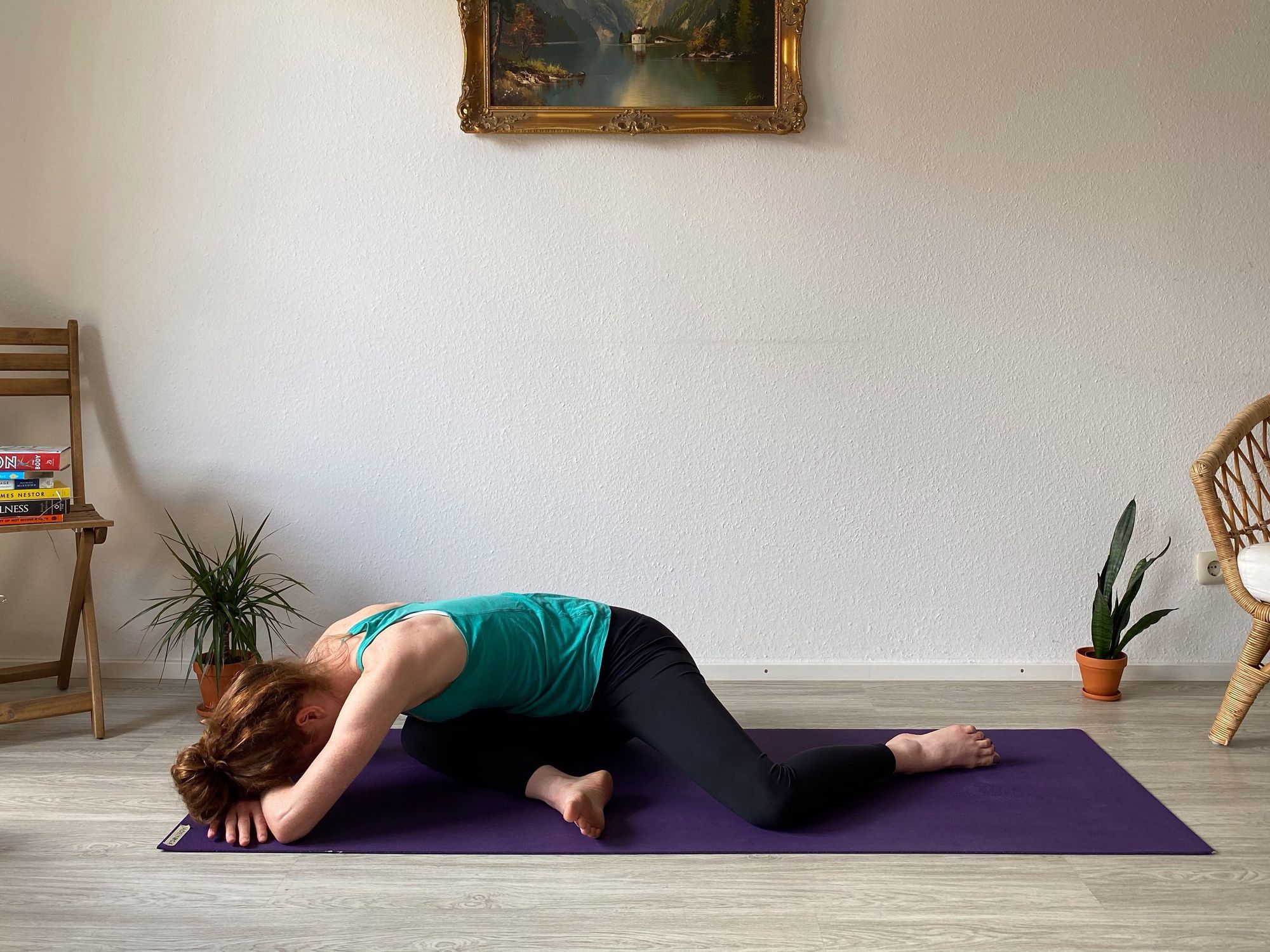Have you ever left a yoga class feeling defeated because you couldn't go as deeply into a pose as someone else? Maybe you couldn't twist or backbend as deeply as the person on a neighboring mat. Or perhaps a certain limitation baffles you because you've been practicing for years and still haven't advanced with certain poses. You're not alone!
A misconception among parts of the yoga community is that everyone can come into any pose to the same extent with enough time and practice. That's just not true and that's okay because - as I will speak to below - coming deeper into a pose purely to mirror an example isn't the intention of yoga asanas. Some bodies will never be able to fold forward to touch their belly to their thighs and it isn't lack of time or tight hamstrings (though sometimes it can be!) keeping them from "advancing", but their anatomy.
Our bodies are anatomically diverse. Some people have more forward opening hip sockets and a longer femur neck allowing them to easily tilt their pelvis and fold forward over their legs. Some people have tons of space in their lumbar spine allowing for deep, intense back bends. While other bodies with a different bone structure may not have access to either simply because their bones will not allow it. This may sound tragic for some, but I'll explain why it's not and why it absolutely shouldn't mean the end of your yoga journey!
I have seen modern yoga promote the aesthetics of yoga poses over their functionality. "Progress" can often be seen as looking like the cover of a yoga magazine. Let's not measure our progress with yoga poses by a one-size-fits-all form, but by safely gaining the intended effects of the pose with the help of tools if necessary! What matters is how the pose feels. If you are reaching the intended sensations and effect that a pose is meant to facilitate, that's advancement! If that means you lift your heels in Malasana, your hips don't stack in Chandrasana, or your hips don't square forward in Virabhadrasana 1, that's completely normal. You can still stretch, mobilize, open, and strengthen target areas of your body with modifications. And if you are able to access various poses without modifactions or tools, don't hold back!
Here's an example of how one pose can be modified differently for two people to reach the same target areas with the intended sensations.
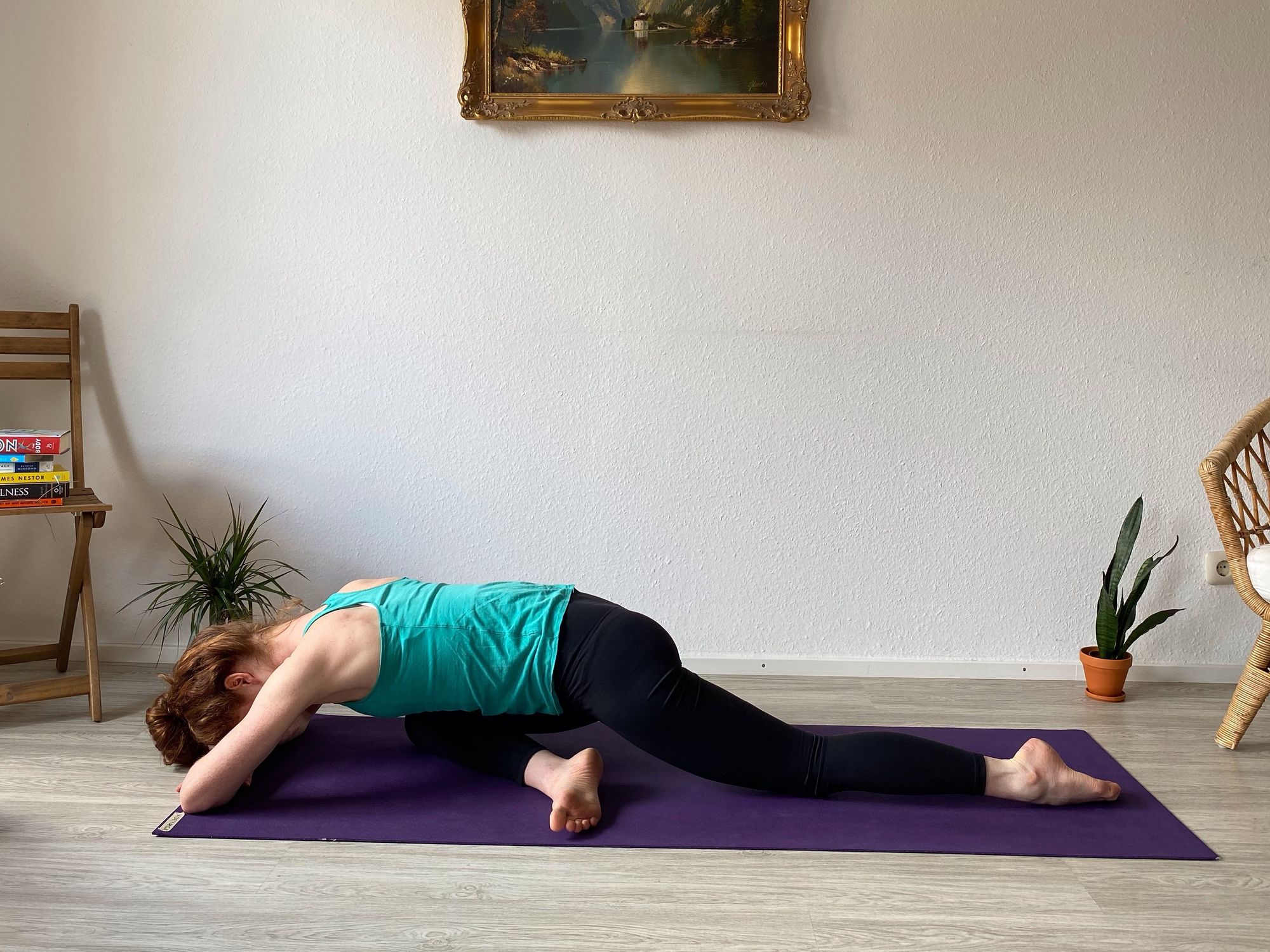
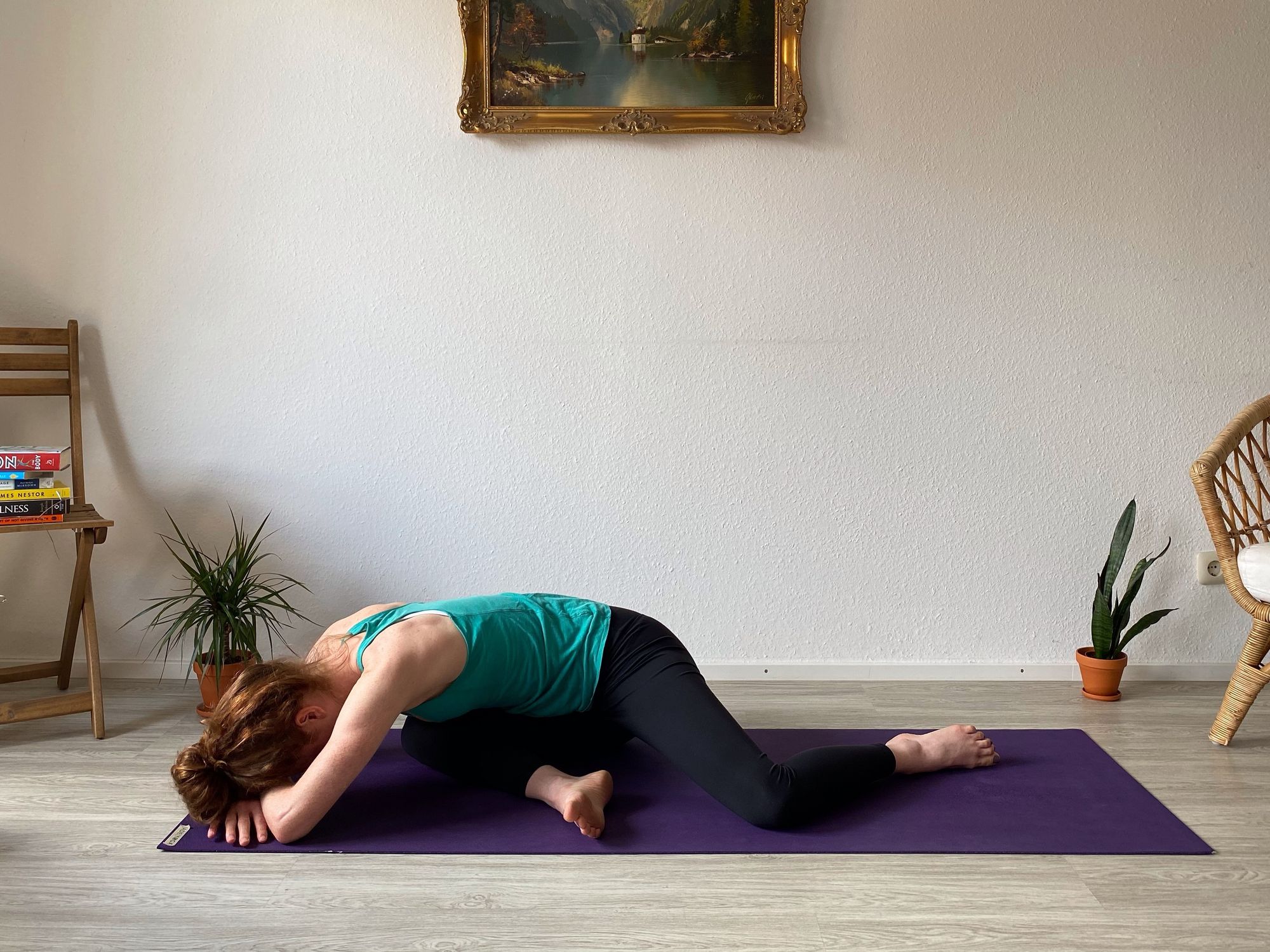
These are two of many variations of Swan. The same variation of Swan will not facilitate the intended sensations in the target areas for everyone.
So how do we know if the reason that we aren't able to go further in a pose is due to compression or tight muscles? It's actually quite simple to analyze! The location of sensations felt during a pose in relation to the direction that the joint is moving in that pose in will tell us if we are feeling muscle tension or compression. Take Paschimottanasana for example. When I fold forward over my legs, my hip joint is moving forward. The sensations I feel in an area opposite to this movement - say in my lower back or back side of my legs - is tension. The sensations I feel in an area of the same direction to this movement - in my groin or inner hips for example - would be compression. This principle is easy to understand, but not visible from the outside! As a teacher, I won't know where my students are feeling sensation unless I ask and they let me know, as we don't all feel the same level of sensation in the same areas in the same pose - so don't be shy and speak up!
Here's a test to know your body's individual limitations to hip flexion.
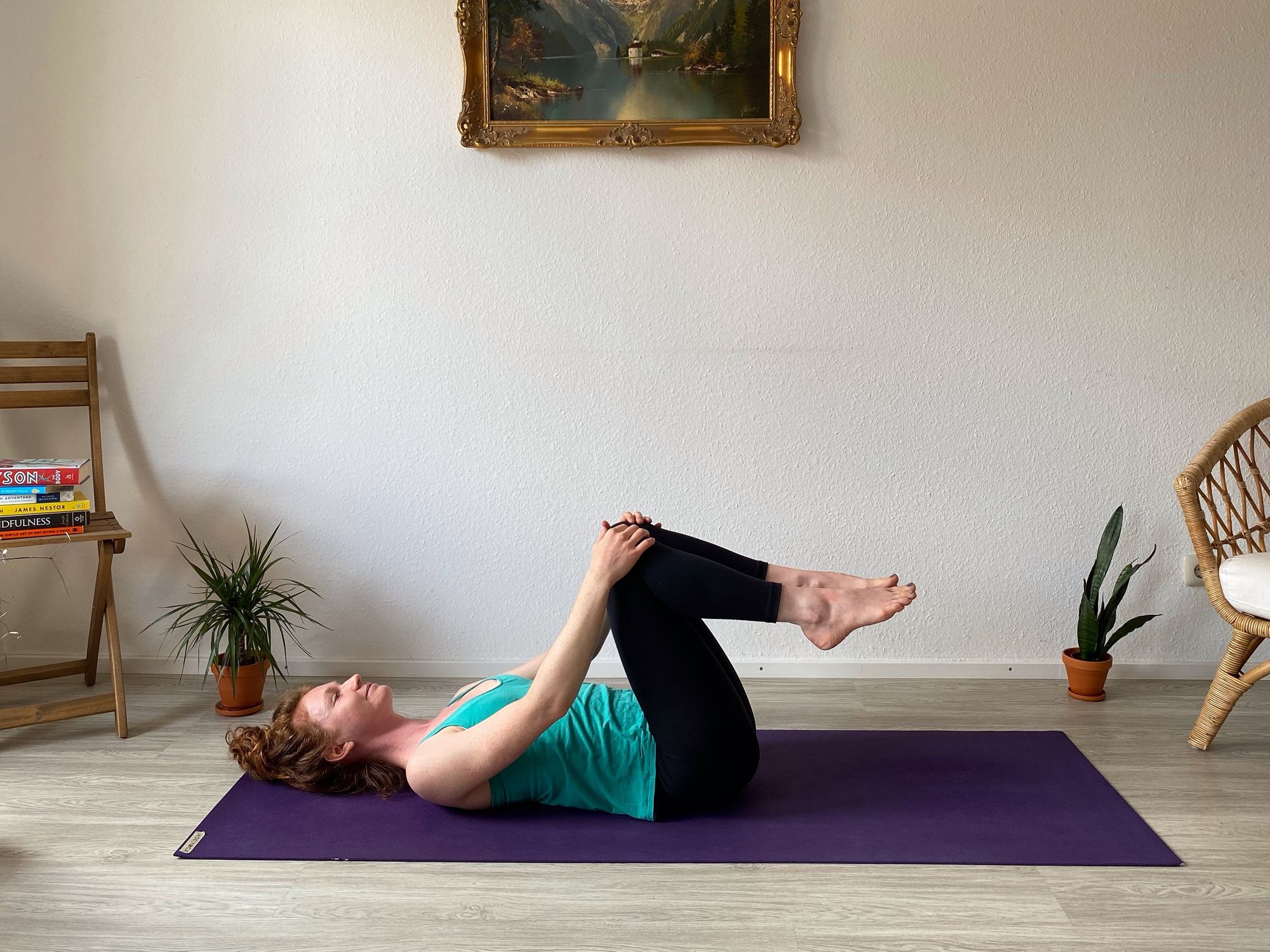
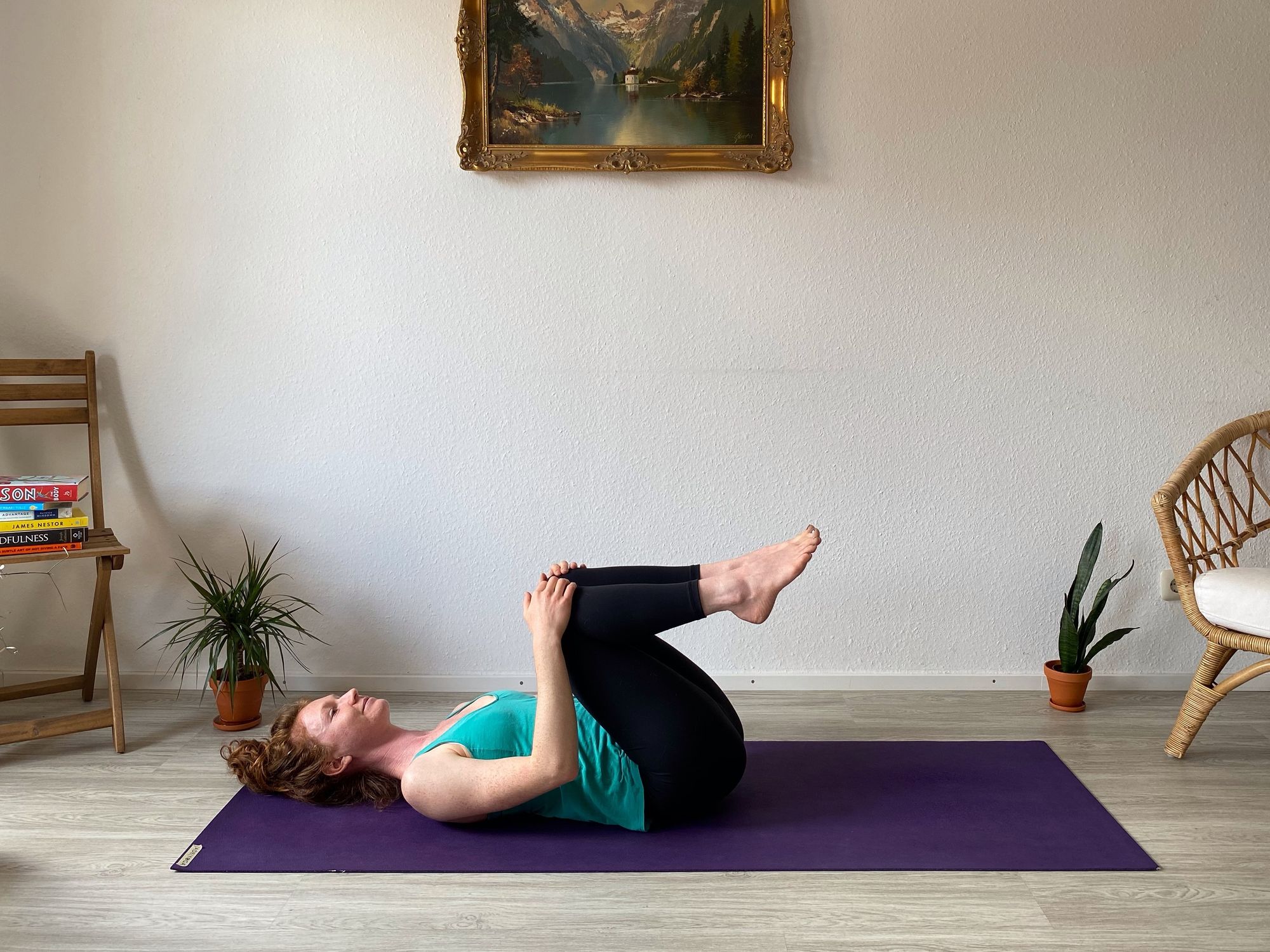
Lie on your back with your sacrum flat on the mat and your feet planted. Slowly start to bring your knees in toward your chest and be mindful of your tailbone while you do this. As soon as your tailbone starts to lift, you have surpassed your body's limit to hip flexion hence the movement now continuing from the tailbone.
Yoga is not meant to be exclusive. Yoga is for everyone. Yoga is for men, body-builders, elderly, the inflexible, the injured, all body sizes, and has the potential to impact all of us, regardless of what body category we fit into.
Modifications with blocks and straps aren't there to hurt our egos, but to help us achieve the same sensations from the pose as someone with a different body structure who may have access to these sensations without modifications. There is no single "correct" way to do a yoga pose. The correct way is the way in which you feel the right amount of sensation that the pose is designed to provide. As Josh Summers' says, "Modifications are not the exception, modifications are the norm". The more we normalize modifications and promote the function of poses over aesthetics, the safer and farther we will all come in our practice physically and mentally. It is important that we educate our students on appropriate sensations to feel in a pose. As such we can prevent injury in students who would otherwise push themselves too far while facilitating the physiological benefits for those who can go further.
Josh Summers' Yin Yoga teacher training prepared me to lead yin yoga classes, but it taught me so much more than that! If you are eager to deepen your understanding of anatomy and are looking for the tools to educate your students on intelligent, functional movements that will help them maximize poses for their individual bodies, I highly recommend Josh's training. It was comprehensive, sans ego, and truly revolutionized my understanding of "progress" and "intention" in respect to yoga asanas. I hope his knowledge reaches more teachers so that together, we can promote safer, smarter, and more inclusive yoga practices.
